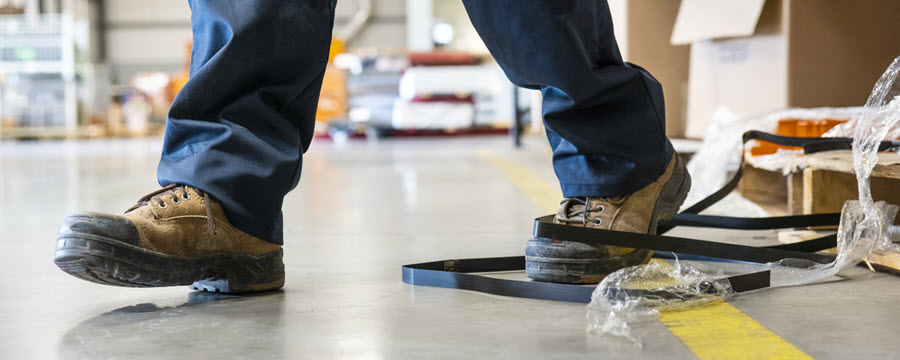
Don’t Let Today’s Near Miss Be Tomorrow’s Injury: Turning Near Misses Into Safety Solutions

You’ve probably heard the phrase, “Those who forget history are doomed to repeat it.” There’s some truth to that. When it comes to workplace safety, that old expression can be especially accurate and foreboding.
Have you ever tripped, just a little, on a loose tile? Or maybe you’ve caught your shirt on a sharp edge of steel on a machine? Or perhaps you’ve repeatedly come around a blind corner only to have a forklift whiz past and miss you by inches. After it happens, you think to yourself, “Someone really ought to do something about that before someone gets hurt!”
Each of these instances may seem like a little thing – just a small incident that didn’t result in any significant damage or injury. The problem is, that if it’s happened to you, it’s probably happened repeatedly to others as well. It’s what OSHA likes to call a close call or a near miss. Eventually, if the problem isn’t addressed, it can lead to a major injury or even fatality. Someone trips and hits their head on the floor. Someone cuts themselves badly on that sharp edge. The forklift can’t avoid the person coming around the corner.
Near misses happen in every business and they are an opportunity. Encourage your employees to report every near miss, no matter how small. What you do with that information can be the difference between a successful safety program and potential lawsuit.
Create a Plan for Near Misses
Before you can reliably turn near misses into solutions, you need to create a workplace policy around them so everyone is on the same page. Keep it simple for optimal employee engagement. Your near miss program should include:
1. Report the Near Miss Incident
Strongly encourage your employees to report close calls. You can’t do anything about a potential hazard if you don’t know it exists, right? Post appropriate signs throughout your workplace, including breakrooms and restrooms, reminding your personnel of the importance of reporting all incidents. Keep reporting anonymous so your employees feel more comfortable doing it.
2. Block Off the Accident Site
No matter how small, it’s crucial to block off the site of the near-miss accident so no one else is exposed to the threat while you develop a game plan for eliminating it.
3. Communicate
Ensure that all managers, safety team members and any affected employees are made aware of the situation. Simply knowing there is a hazard helps to avoid more accidents. Plus, open communication improves your chances of coming up with a solution to the situation.
4. Fill Out the Proper Form
You’ll want to have documentation of the situation for future reference. OSHA has a template called the “Employee’s Report of Injury Form”. It’s a clear, easy-to-use 5-page form that helps you keep track of all pertinent information from the near-miss incident.
5. Resolve the Issue
Now that you have all of the information, you can work together with your safety team to come up with a solution for fixing the hazard. You know where the hazard is and what has been causing it. The final step is to take measures to eliminate it permanently.
Don’t Underestimate Near Misses
When a near miss occurs, whether to you or an employee, it can be easy to breathe a sigh of relief and shrug it off. After all, no one was seriously hurt! By ignoring these situations, you’re setting your company up for a much worse incident in the future. By encouraging your employees to report all near miss incidents, you’re creating an opportunity to improve the overall safety of your facility.
Workplace safety doesn’t happen by accident. Create a plan to turn your near miss incidents into long term solutions for a safer and happier workplace.

